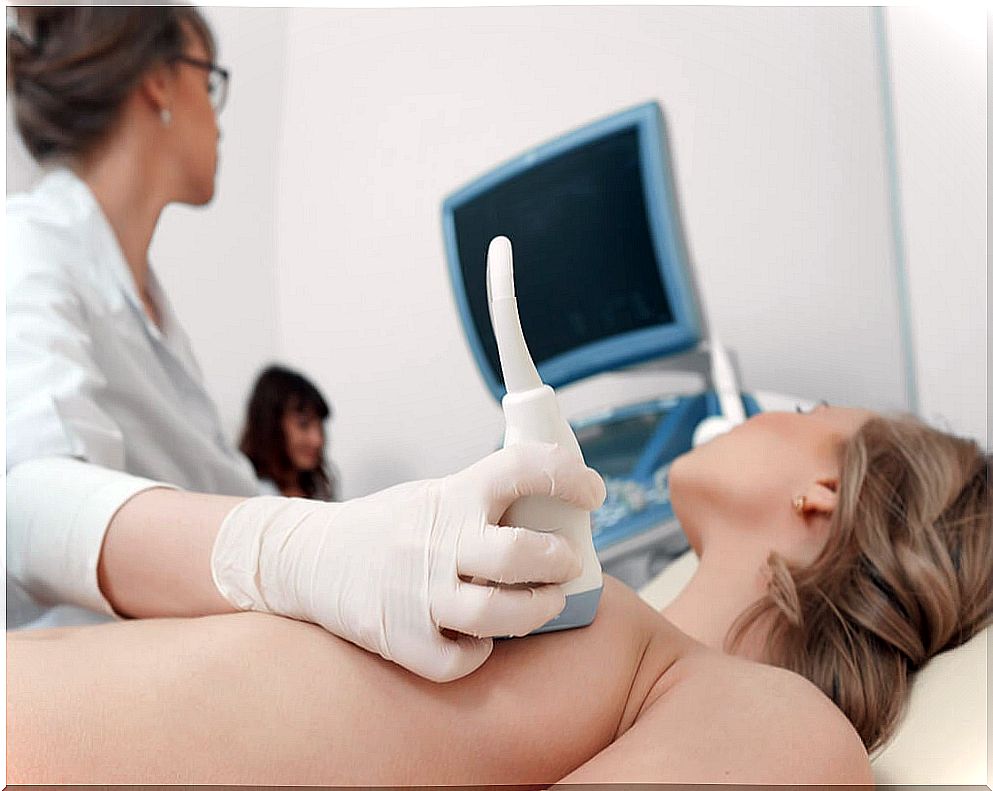Adenolipomatosis
Adenolipomatosis is a very rare disease. It is characterized by the appearance of lumps or lipomas in certain areas of the body, such as the extremities.

Adenolipomatosis is a rare disorder characterized by the appearance of multiple adenolipomas in different locations in the body. An adenolipoma is a rare variant of lipomas, benign tumors that grow at the expense of fatty tissue.
The peculiarity of adenolipomas is that sweat glands appear within the tumor. Therefore, adenolipomas are benign fatty tissue tumors with sweat glands inside.
As a consequence, “bumps” grow, usually in the cervical region or on the extremities. It is also relatively common to find them in the chest or even in the breasts or thyroid. Therefore, the explanation of the table will be done in three groups:
- Adenolipomas in the breast.
- Adenolipomatosis of the skin.
- Thyroid adenolipomatosis.
Who is affected by adenolipomatosis?
Based on studies, adenolipomatosis affects men more than women. The typical age of onset is between 30 and 70 years, although the majority is usually around 50 years of age.
Clinical manifestations

The main consequence of the proliferation of fat cells is the formation of tumors or “lumps”. They do not produce symptoms per se .
Adenolipomatosis of the skin
When adenolipomas are superficial and affect the skin, they are simple lumps. The size is variable, depending on how long it has been present. Also, they grow slowly.
In most cases they are located in the cervical region or in the extremities. This does not exclude other locations, since cases in the chest and back have also been described. The main problem they pose in principle is aesthetics.
Adenolipomas in the breast

In this case, the lump is small, therefore it cannot be seen but can be felt. It usually generates a lot of anxiety and anguish in people who notice a lump and do not know what it is. It is best to go to the doctor as soon as possible.
They are characteristically soft in consistency, although upon palpation it can be noticed that they have well-defined borders. In addition, if you try to move with your fingers, these are mobile.
As rare as they are, they appear much more frequently in young women. However, they can also occur in older women or even men.
Thyroid adenolipomatosis
It is also a very rare and totally benign case. It is due to the abnormal growth of thyroid tissue and surrounding fat.
In principle, they do not usually alter thyroid hormone levels. As a complication, they could cause some nervous compromise due to cell growth.
Diagnosis and treatment

- Medical history and physical examination. It is important to know how long the lesion has been present, as well as to rule out the presence of signs of malignancy. In this sense, it is important to collect information on whether the lesion is mobile, whether the edges are defined, whether it has ulcerated or bled, among others.
- Tissue analysis. It is the key test for the study of this type of injury. Once the sample is extracted, it will be analyzed in pathological anatomy.
- Blood test, including biochemistry. It is a practically “standard” test. They will mainly look for high levels of cholesterol or alterations in the levels of hormones, which are usually normal.
- Imaging tests. They are performed to rule out malignancy, since they are usually totally normal.
- Tumor markers are never routinely ordered. Unless the specialist suspects malignancy, they are tests that are not requested.
Treatment of adenolipomas is generally surgical. It depends on the individual case of each person, but it can usually be done on an outpatient basis. That is, with local anesthesia and without the need to enter.
In cases in which it affects the breast or the thyroid, they are removed in the operating room and under general anesthesia. The risk of the lesion reappearing is minimal or even non-existent.
Possible complications
Some of these lesions, particularly those of the breast, can calcify.
In addition, depending on the location, especially “internal” injuries, they can compromise some functions. For example, laryngeal or thyroid lesions could cause breathing difficulties.









